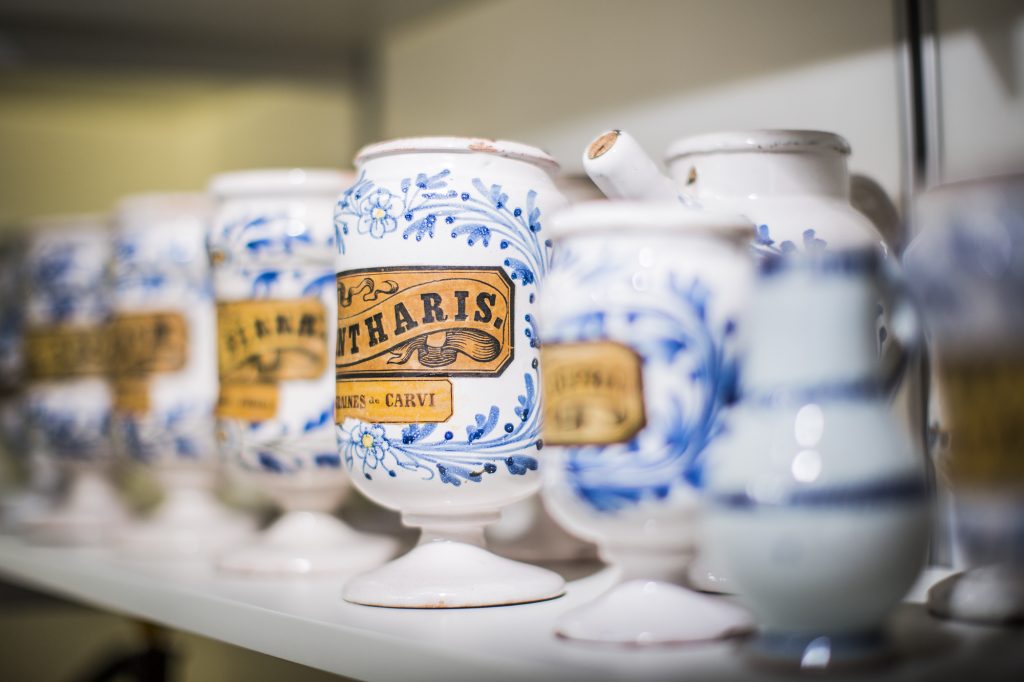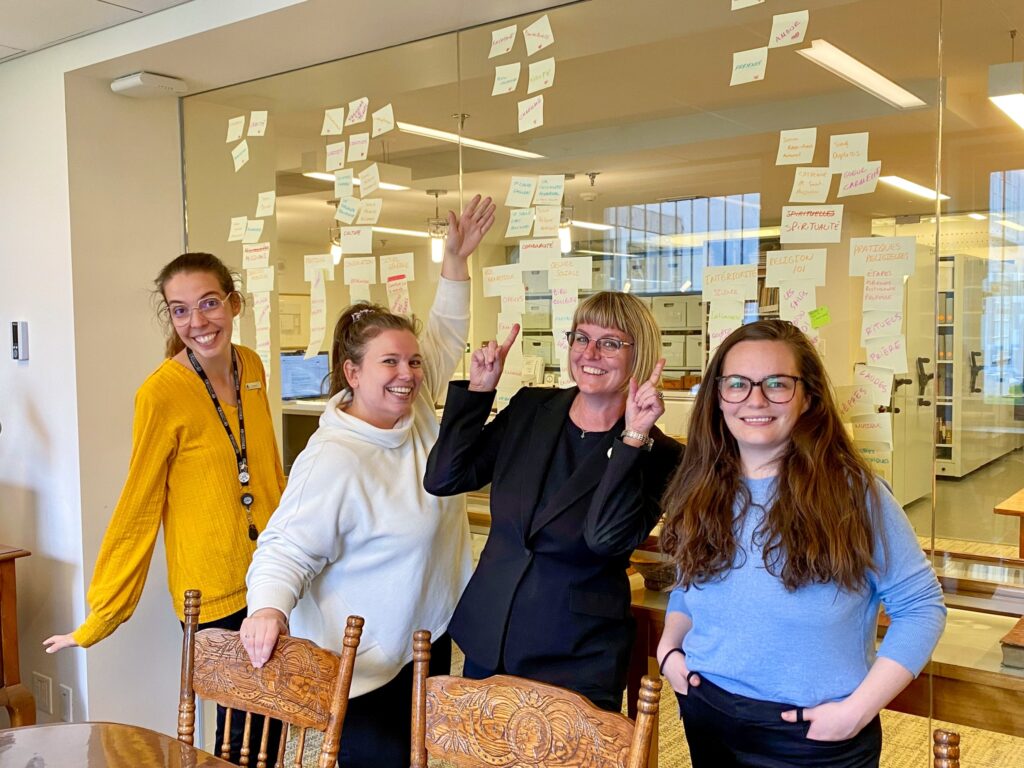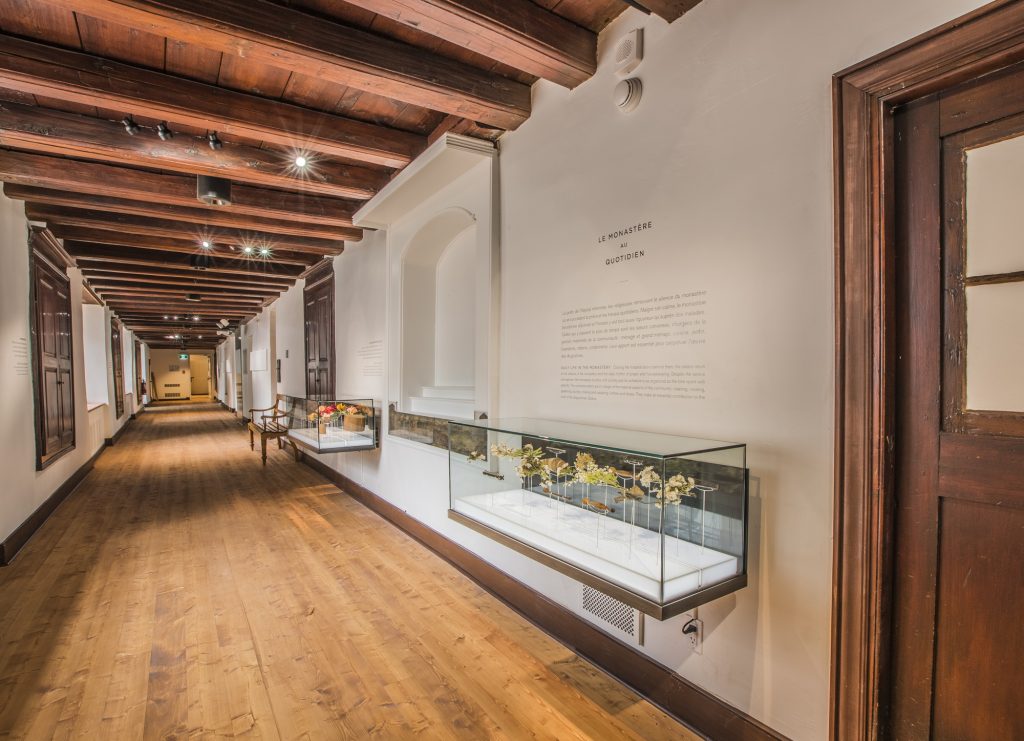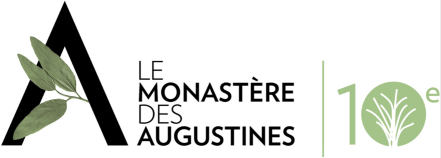The making of a permanent exhibition
The Museum team at Le Monastère des Augustines, supported by experts from diverse fields, is currently working on the making of a new permanent exhibition. This large-scale process, built on years of preparation, often remains invisible to visitors—yet it deserves to be brought into the light.
The inauguration of the exhibition, scheduled for December 2025, will mark the culmination of months of research, consultations, and the careful selection of objects designed to offer visitors a memorable museum experience. The major stages of the making of a permanent exhibition, outlined here, reveal how such a project takes shape.

Why renew a permanent exhibition?
Despite what its name suggests, a “permanent” exhibition is not necessarily eternal. While it does not have a fixed duration, it is generally designed to remain for an extended period, often more than 10 years.
“Renewing an exhibition is important to ensure the preventive conservation of artifacts and archives that have been on display for several years,” explains Andréanne Cantin, Museum Manager at Le Monastère des Augustines. Objects exposed to light and temperature variations are then returned to storage, where controlled conditions prevent their deterioration.
“It’s worth noting that only 2% of the objects from our collections and archives are on display in Augustinian Sisters: Caring for Body and Soul. There are so many more that deserve to be discovered,” she adds.
Renewing the permanent exhibition allows us to safeguard heritage objects while also offering visitors new perspectives on the history of the Augustinian Sisters.
The steps involved in the making of a permanent exhibition
1. Reviewing the previous exhibition
A detailed assessment of the current exhibition helps identify what works well and question what needs to be improved.
“The evaluation of Augustinian Sisters: Caring for Body and Soul showed us that the way history is approached and exhibitions are designed has evolved significantly over the past decade, particularly in relation to women’s history, religious communities, health, and colonialism. We felt it was important to align ourselves with contemporary research to provide a truthful and relevant reading of the Augustinian Sisters’ history. The story of the Augustinian Sisters must not be frozen in the past. Their heritage continues to resonate in today’s society, and that is what we want visitors to feel,” Andréanne emphasizes.
2. Defining a meaningful vision
In 2022, a process of reflection was launched to determine the main themes, including shedding light on lesser-known aspects of history, while also exploring how the exhibition could further extend the well-being experience offered at Le Monastère. This vision guided the subsequent research and narrative design stages.

3. Research and validation
Once the vision was set, the research process began: consulting archives, studying the latest scholarship, and engaging in dialogue with experts such as historians, an art therapist, and museologists. The goal was to test ideas, refine the content, and ensure a rigorous yet sensitive interpretation of history.
“For the making of the new permanent exhibition, we created two external committees: one scientific and one focused on the visitor experience,” Andréanne notes.
4. Designing the visitor experience
The story of an exhibition is structured through the sequence of rooms, the rhythm of the visit, the atmospheres, and the emotions the curators wish to evoke.
“We wanted the new permanent exhibition to offer moments of introspection as well as times to resurface, with this balanced rhythm supported by scenographic spaces designed for these experiences,” Andréanne illustrates.
5. Community consultation
To ensure relevance and inclusivity, consultations were carried out with:
- local residents,
- representatives of First Nations,
- prospective visitors,
- colleagues from various sectors,
- and Augustinian Sisters.
Each contribution helped adjust the tone and balance of the new exhibition, allowing diverse perspectives to coexist.
6. Production, installation, and opening
Writing exhibition texts is an important and complex task. At Le Monastère, it takes on particular significance since the texts are meant to support well-being experiences. “We often underestimate the complexity of museum writing. It has to be accurate, truthful, and moving at the same time,” Andréanne reminds us.
The making of a permanent exhibition will take shape through:
- the reuse of existing structures, out of concern for sustainability,
- the creation of new furniture when necessary, following eco-design principles,
- lighting designed to provide a calming environment,
- labels that spark emotion or reflection,
- and interactive technologies that remain accessible and unobtrusive.
Finally, in fall 2025, the current exhibition will be carefully dismantled to make way for the new one. Animators will be trained and facilities reviewed before the official opening.

To summarize, the making of a permanent exhibition involves rigorous research, deep reflection on history, consultation with stakeholders, and the creation of a space where the subject can be experienced in all its nuances. It is a choreography inviting visitors to move from historical learning to well-being—or to experience moments where both coexist.
The Museum team at Le Monastère des Augustines is committed to embodying these principles to offer visitors a sensitive and living encounter with heritage. “We don’t see the opening of the new exhibition as an ending. We see it as a beginning. That’s when the exhibition truly comes alive—through the people who experience it,” concludes Andréanne.

